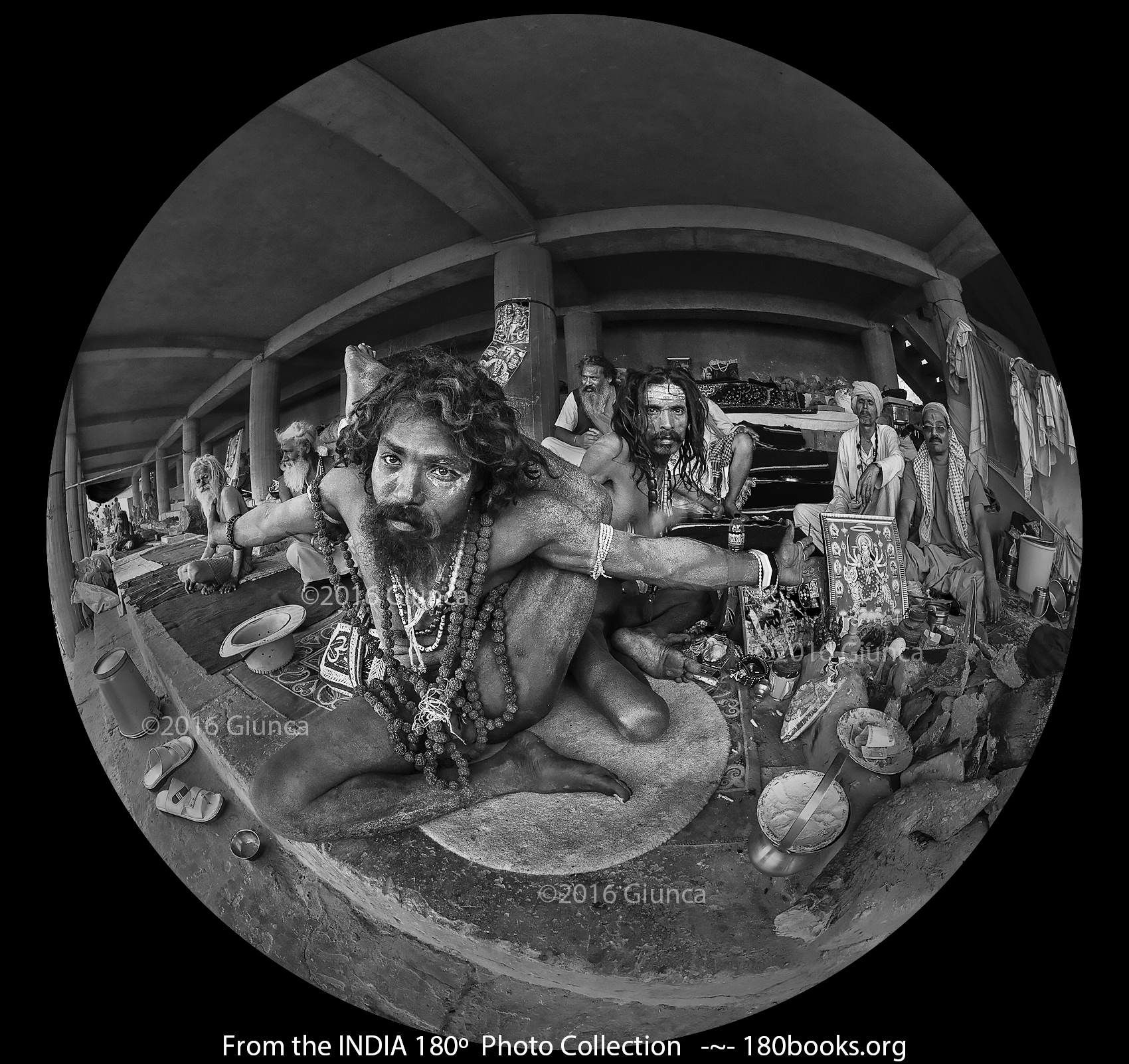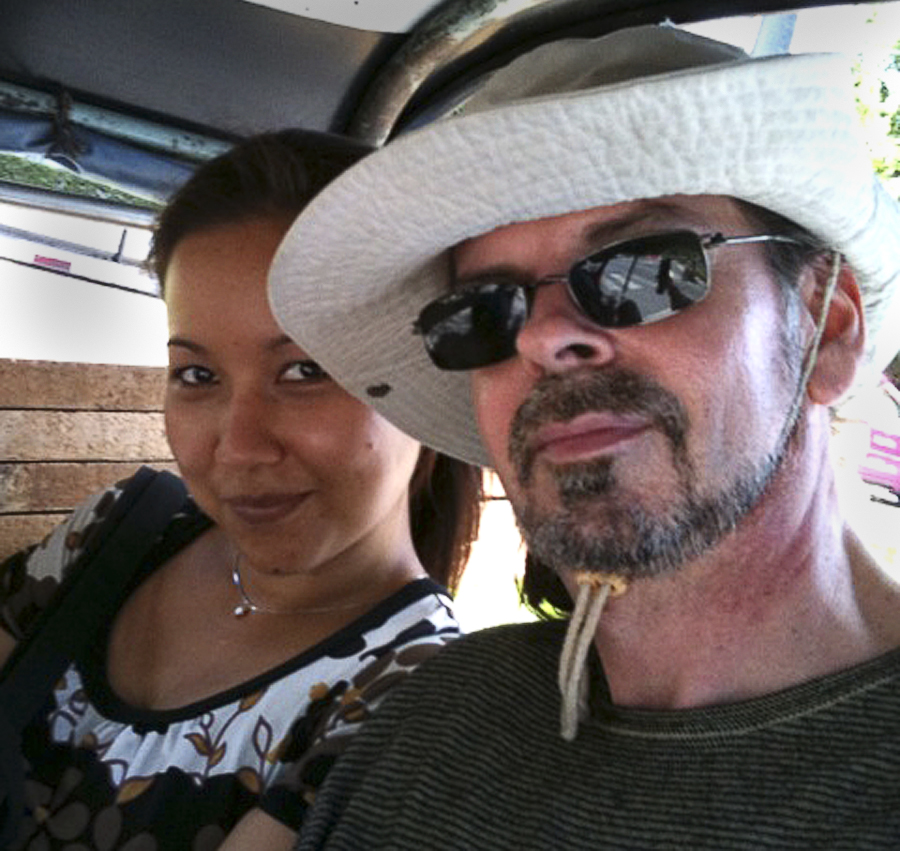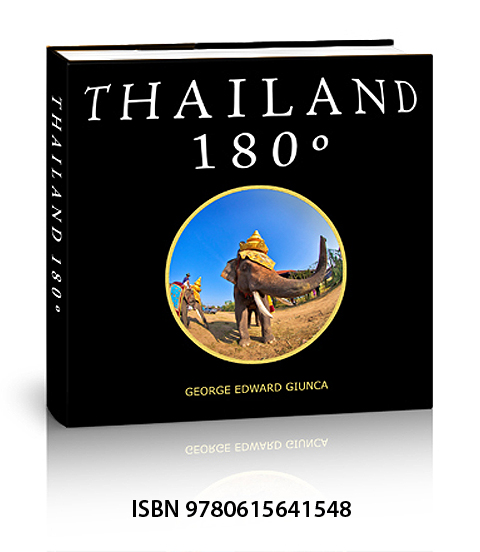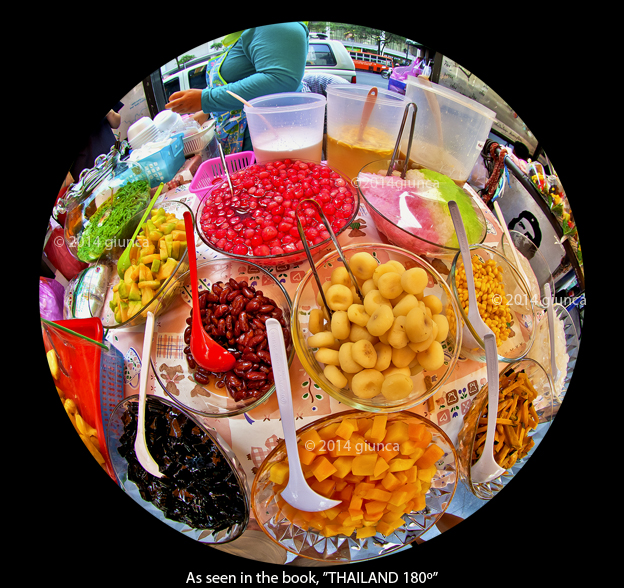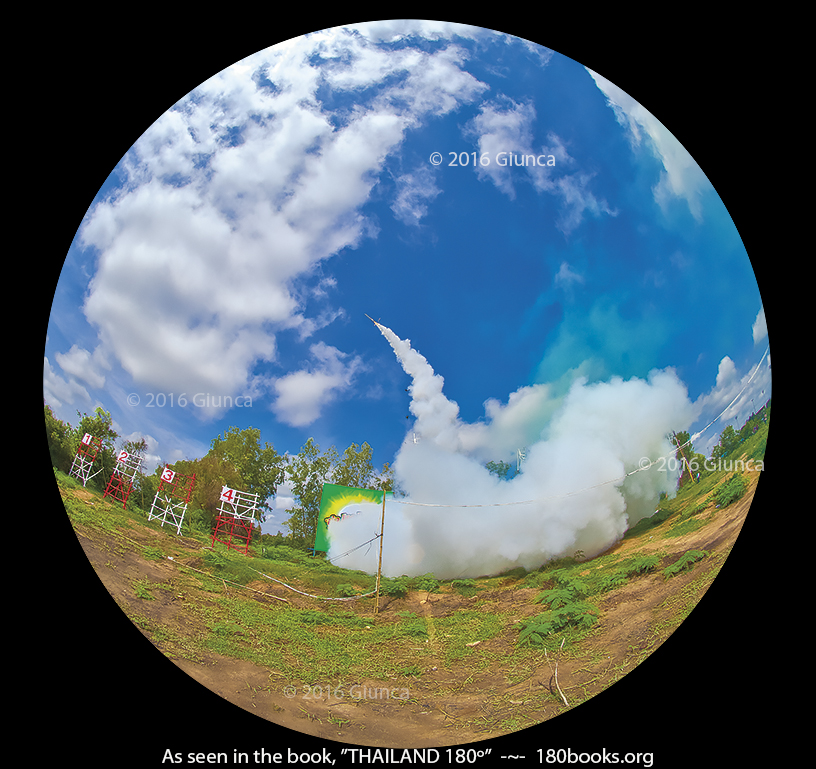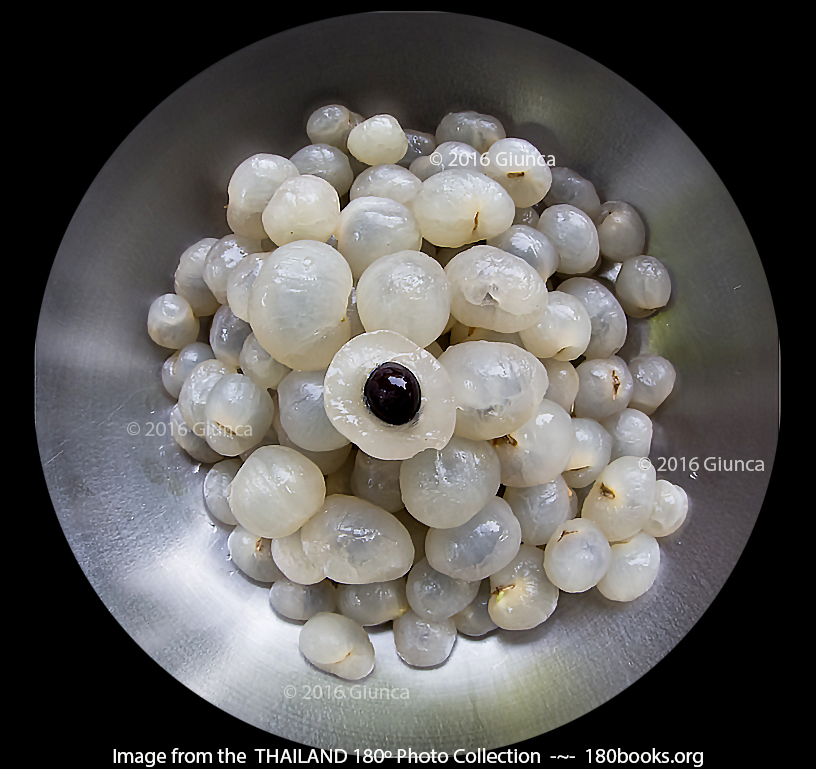Maha Shivaratri in the Holy City of Varanasi – महाशिवरात्रि – มหาศิวะราตรี ณ เมืองพาราณสี
Night of Shiva
The Maha Shivaratri, or ‘Night of Shiva’ is one of the most important Hindu festivals. It is celebrated all over India on the 14th night of the new moon in the Hindu calendar month of Phalgun, which falls somewhere between February and March on the Western calendar. We had a chance to witness this festival, dedicated to Lord Shiva on the banks of the Ganges river in the Holy City of Varanasi, AKA as City of Lord Shiva where the Mahashivaratri festival is celebrated with great fervor. Our time in Varanasi is forever etched in my mind, and I’ll share these rich moments with you today.
วาราณสี หรือ พาราณสี เป็น ๑ ใน ๗ เมืองศักดิ์สิทธิ์ของประเทศอินเดีย มีประวัติความเป็นมายาวนานกว่าพุทธกาลมากโข จิตวิญญาณยังแกร่งกล้า มนตรายังคงขลัง พลังศรัทธายังล้นหลาม แม้อาคารสิ่งก่อสร้างจะดูเก่าแก่มากก็ตาม เมืองที่ตั้งอยู่ริมคงคามหานที มีความผูกพันกับผู้คนที่นี่ตั้งแต่เกิดจนตาย อีกทั้งยังเป็นเมืองที่มีความหลากหลายทางศาสนาทั้งฮินดู, อิสลาม, พุทธ, เชน, คริสต์ และซิกข์ นอกจากนี้ยังเป็นเมืองเกิดของศาสดาองค์ที่ ๒๓ : ปรัศวนาถะ ในศาสนาเชน, มีพุทธสังเวชนียสถานเมืองสารนาถ อันเป็นสถานที่พระพุทธเจ้าทรงแสดงปฐมเทศนา และหลายพันปีมาแล้ว พาราณสีเคยเป็นเมืองหลวงแห่งแคว้นกาสี สถานที่ที่องค์ศิวะมหาเทพมีความสุขสุนทรีย์ในพลังแห่งปราชญ์และเสียงเพลง, การสังคมกันของผู้คน และวิถีของเมืองที่ออกแบบมาอย่างมีศักยภาพ พระองค์หลงรักเมืองกาสีจนไม่อยากจากไปแห่งหนตำบลใดอีก จนเรียกขานกันว่าเป็นเมืองของพระศิวะ (The City of Lord Shiva)
ด้วยเหตุนี้เราจึงเดินทางไปเมืองพาราณสี ณ ช่วงเวลาแห่งการเฉลิมฉลอง “มหาศิวะราตรี” หรือ “ราตรีแห่งพระศิวะ” ซึ่งนับเป็นเทศกาลที่สำคัญยิ่งในการสักการะบูชาองค์พระศิวะ หนึ่งในสามเทพสูงสุดของศาสนาฮินดู โดยจัดในวันแรม ๑๔ ค่ำ เดือน ๓ ตามปฏิทินฮินดู ตรงกับช่วงปลายเดือนกุมภาพันธ์ถึงต้นเดือนมีนาคมของทุกปี สำหรับเรานั้นมันเป็นเวลาสั้นๆ ที่แสนยาวนานในจักรวาลแห่งพาราณสี

The spectacular Ganga Aarti at the Dashashwamedh Ghat. (Image from the 180books.org Photo Collection by George Edward Giunca)
The Ganga Aarti
Our hotel, Heritage Jukaso Ganges, was right on the shore of the Ganges River at the Guleria Ghat, and we had to take a boat taxi to reach it. I usually don’t mention where we stay, but the location, food, and overall comfort factor of this hotel greatly added to our experience. Soon after checking in, another boat took us on a private sunset tour along the historic river. On the far end of the river, cremations were taking place, and smoke billowed into the air. Everywhere crowds of pilgrims made offerings at the temples, Sadus gave blessings, men, and women bathed in the holy river, and a few cows meandered along the walkway as the setting sun cast its golden glow.
Later in the evening, we walked a short distance to the Dashashwamedh Ghat to watch the Ganga Aart ritual. This ceremony which has been performed since ancient times celebrates God’s divine form as symbolized by the five elements: space (Akash), The Wind (Vayu), Fire (Agni), Water (Jal), Earth (Prithvi). The performer faces each direction during each stage of the Aarti so that we’re reminded that God is always at the center of our lives and we should remain humble and faithful no matter what circumstances we find ourselves in along life’s journey. The ceremony lasted about 30 minutes, and by the time it ended the river was filled with throngs of pilgrims on boats who were just arriving for the festival.
ปกติจะไม่ค่อยกล่าวถึงสถานที่พักในบล็อก แต่บล็อกนี้อยากแนะนำโรงแรม Heritage Jukaso Ganges ตั้งอยู่ริมแม่น้ำคงคา มีสิ่งอำนวยความสะดวกครบ, ไวไฟไวปรู๊ดปร๊าด, อาหารรสชาติดีค่ะทานที่โรงแรมทั้งเช้า-เย็นเลย โรงแรมอยู่ตรง Guleria Ghat เป็นโซนที่ไม่พลุกพล่าน มีความสงบเป็นส่วนตัว และที่สำคัญคือไม่ไกลจาก Ghat หรือท่าน้ำต่างๆ ซึ่งเราสามารถเดินชมวิถีชีวิตในแบบวอล์คกิ้งทัวร์ด้วยตัวเองได้ แต่ควรจองล่วงหน้าหลายเดือนเพราะมีผู้เข้าพักเต็มตลอดทั้งปี — ตื่นก่อนไก่ขันแลตะวันฉาย ออกไปนั่งเรือชมบรรยากาศริมฝั่งแม่น้ำคงคายามรุ่งอรุณ ควันไฟในพิธีฌาปนที่ท่าน้ำมณีกรรณิกาเริ่มพวยพุ่งขึ้นอีกครั้ง, ผู้คนหลั่งไหลมาประกอบพิธีกรรมริมท่าน้ำต่างๆ อย่างไม่ขาดสาย, สาธุหรือนักบวชถือพรตนั่งสวดมนต์ภาวนาโยคะและให้พรแก่สาวก, ในขณะที่ทุกท่าน้ำเต็มไปด้วยผู้คนทั้งหญิงชายกำลังอาบน้ำชำระร่างกายในแม่น้ำศักดิ์สิทธิ์ ฝูงวัวเดินเยื้องย่างปะปนกับผู้คนยามแสงอาทิตย์เริ่มสาดทอแสงสีทองอร่ามริมคงคามหานที
เอกลักษณ์สำคัญของเมืองพาราณสีที่ยังคงปฏิบัติสืบเนื่องกันมาแม้เวลาผ่านไปยาวนานเกินกว่าประวัติศาสตร์จะจารึกไว้ได้หมด นั่นคือ พิธีกรรม โดยเฉพาะศาสนาฮินดูซึ่งเป็นที่นับถือของคนส่วนใหญ่ … “พิธีกรรม” ดึงดูดนักแสวงบุญมาจากทั่วสารทิศ ในขณะเดียวกันวิถีชีวิตและเสน่ห์ของเมืองพาราณสี ดึงดูดนักท่องเที่ยวมาจากทั่วทุกมุมโลก — “พิธีคงคาอารตี” เป็นพิธีกรรมหนึ่งที่ปฏิบัติมาแต่โบราณอันเป็นการแสดงความเคารพสูงสุดต่อพระแม่คงคาและปฏิบัติเป็นประจำทุกวัน โดยเฉพาะช่วงค่ำจะมีผู้คนมาร่วมพิธีเป็นจำนวนมาก พิธีอารตีที่เรียกง่ายๆ ว่า พิธีบูชาไฟ แต่ในพิธีไม่ได้มีเพียงแค่เปลวไฟเท่านั้น หากยังมีหลายอย่างที่ใช้ในการประกอบพิธี เช่น สังข์, ระฆัง, ธูป, ภาชนะหรือหม้อใส่น้ำ, กำยาน, ตะเกียงน้ำมันฆี, การบูร, ดอกไม้, พัดขนนกยูง และแส้หางจามรี ซึ่งทั้งหมดเป็นสัญลักษณ์แสดงถึงธาตุทั้ง ๕ ในศาสนาฮินดูอันได้แก่ ดิน, น้ำ, ไฟ, ลม, และอากาศ พิธีคงคาอารตีใช้เวลาประมาณครึ่งชั่วโมง พอเสร็จพิธีก็ยังคงมีผู้คนทยอยเข้ามาในบริเวณนี้เนื่องด้วยคืนนี้เป็นคืน “มหาศิวะราตรี” นั่นเอง

A busy early morning for people who are going to make a ritual puja. (Image from the 180books.org Photo Collection by George Edward Giunca)
Traditions and Customs: ธรรมเนียมปฏิบัติในวันมหาศิวาราตรี
On the first morning of Maha Shivaratri, devotees wake up early and take a ritual bath, especially in the Ganga River. Afterward, they wear some new clothes and visit the nearest Shiva temple to perform a ritual of bathing to the Shiva Lingam with milk, honey, water, flowers, Bilva leaves, and some sweets. Married women ask Lord Shiva to bless and protect their husband; single women ask him to find them a husband.
We were looking forward to seeing the re-enactment of the wedding ceremony of Shiva and Parvati at the Tilbhandeshwar temple and headed there on the small passageways in the city. This is one of the few places in India where people dance in processions after drinking bhaang lassi; cannabis and sweetened milk preparation. Alas, it wasn’t meant to be! The crowd was too thick, and they were very much into their celebration. We decided to play it safe and visit some of the smaller temples on the way back to our hotel.
ในวันมหาศิวะราตรี ชาวฮินดูจะตื่นแต่เช้ามืด อาบน้ำ สวมเสื้อผ้าชุดใหม่สะอาดเอี่ยม ***ที่สำคัญคือ น้ำที่อาบในวันนี้ต้องเป็นน้ำจากแม่น้ำคงคา*** เสร็จแล้วไปเทวสถานเพื่อประกอบพิธีถวายแด่องค์มหาเทพ โดยนำน้ำนม, น้ำผึ้ง, น้ำ, ดอกไม้, ใบมะตูม, ผลไม้และขนมหวานไปสักการะพระศิวลึงค์ และตลอดทั้งวันจะทำพิธีบูชา, สวดมนต์, ปฏิบัติสมาธิภาวนา, ร้องเพลงสรรเสริญและเล่าเรื่องราวความยิ่งใหญ่ขององค์มเหศวร ซึ่งผู้แสวงบุญส่วนใหญ่จะอดอาหารอดน้ำตลอดทั้งวันทั้งคืนไปจนเช้าวันรุ่งขึ้น นักแสวงบุญมาร่วมงานกันล้นหลาม เดินไปก็ฮัมบทสวดบ้าง, สรรเสริญพระนามของพระศิวะบ้าง ว่ากันว่ามีบางที่นั้นเต้นรำสรรเสริญองค์โภเลนาถหลังจากดื่มลาสซี่ผสมยอดช่อดอกแคนนาบิส … ผู้คนเยอะมากๆ มากจนเดินแบบไหลตามกันไปอย่างเบียดเสียดโดยเฉพาะหน้าวัดกาสีวิศวะนาถ เราเลยเปลี่ยนแผนไปวัดเล็กๆ ระหว่างทางที่เดินกลับโรงแรม

Lord Shiva and Parvati mural (George Edward Giunca for 180books.org/Image from the 180books.org Photo Collection by George Edward Giunca)
The Legends of Lord Shiva: ความเป็นมา
There many legends of Lord Shiva that I’m afraid that I can’t cover them all in this blog. I found this animated movie to be an enjoyable way to learn a few of the stories (HERE) and this series by Epified for more in-depth knowledge (HERE). Because some trace the origins of Maha Shivaratri to the celebration of the marriage of Lord Shiva and Parvati, I thought I’d post the photo of a mural above. This type of image that shows them together is called an Ardhanarishvara. It illustrates the reconciliation of Shiva, a spiritual ascetic, and Parvati the more materialistic wife/householder. This is not meant to show a duality, but instead, it shows a oneness. It is said that they cannot exist without one another. Once again, I beg you to watch the videos I mentioned above for a complete explanation. Now back to Shivaratri and how the evening is celebrated.
มหาศิวะราตรี มีที่มาและตำนานหลากหลาย ไม่รู้จะเล่ายังไงเพราะนอกจากจะมีที่มาเยอะแยะแล้วยังยาวอีกด้วย เราเลยนำลิ้งค์ยูทูป แต่บรรยายเป็นภาษาอังกฤษมาแปะไว้ให้ที่นี่เผื่อท่านใดสนใจตำนานเรื่องราวของอินเดียจริงๆ เพราะหาอ่านตำนานเป็นภาษาไทยแล้วไม่ค่อยมี ต้องไปอ่านภาษาอังกฤษแล้วมาสรุปสั้นๆ ว่า บางแห่งกล่าวว่าวันมหาศิวะราตรีเป็นวันสมรสของพระศิวะและพระแม่ปารวตี บ้างก็ว่าเป็นวันที่พระศิวะดื่มพิษของพญานาคทั้งหมดที่เกิดขึ้นเมื่อครั้งมีการกวนเกษียณสมุทรเพื่อปกป้องโลกจากการถูกทำลายล้าง พระศอของพระองค์จึงเป็นสีดำคล้ำ — (ภาพด้านบน) พระอรรธนารีศวร เป็นภาพคครึ่งพระศิวะ-ครึ่งพระอุมาเทวี/ปารวตี สื่อถึงพลังแห่งชายและหญิงที่รวมกันเป็นหนึ่ง ไม่ใช่เพียงแค่เป็นคู่กัน หากแต่โลกนี้ไม่สามารถขาดหญิงหรือชายได้ อันเป็นการรักษาสมดุลของโลกและก่อกำเนิดชีวิตใหม่

A ritual of bathing to the Shiva Lingam. (Image from the 180books.org Photo Collection by George Edward Giunca)
All Through the Night
Throughout the night and into the next morning, devotees make offerings of milk, Bhang, Dhatura, flowers, coconut, fruits, etc. to Shiva statues and Shiva Lingams. Bhajans are sung in honor of Shiva and shlokas (verses) from scriptures are resighted. Many worshippers fast through the entire festival. Many devotees believe that worshipping Lord Shiva on this auspicious day of the Maha Shivaratri helps absolve them of their sins and hope to be liberated from the cycle of life and death thus entering the high spiritual plane of Nirvana. Of course, for this, you need to offer Bilva leaves, as these are leaves from a sacred tree that Lord Shiva worships.
ตลอดทั้งคืนมหาศิวะราตรีนี้ยังคงดำเนินพิธีบูชา, สวดมนต์, ปฏิบัติโยคะสมาธิภาวนา, ร้องเพลงสรรเสริญ/บทโศลกองค์มหาเทพ, อดน้ำและอาหารกันต่อไป โดยเฉพาะที่วัดและเทวสถาน เพราะถือว่าหากใครปฏิบัติพิธีกรรมทั้งหมดนี้ตลอดทั้งวันและทั้งคืน(ห้ามหลับ) จะช่วยขจัดสิ่งชั่วร้ายและบาปของตน ตลอดจนอาจทำให้ได้ไปสู่แดนสวรรค์ หรือบรรลุถึงมรรคผลนิพพาน
Meetings with Holy Men
We started our next morning early and walked along the Ganges making gazillions of photos. There were many Sadhus (Holy Men) that I made photos of, including the infamous Aghoris in the photo above. You can read more about the Aghoris (Here), and if you’d like to see my ever-growing collection of black and white portraits known as 180º FACES OF INDIA, they’re on Google+ (Here).
It was difficult to leave Varanasi even though we still had three more exciting weeks of touring India to look forward to. There’s just something about that city that still calls us back for another visit, to this day. Don’t be surprised if you see us checking-in on our FaceBook page from there again soon.
ในคืนมหาศิวราตรีมีถ่ายทอดสดการแสดงศิวนาฏราช และการแสดงเรื่องราวขององค์ตรีเนตรทางทีวีอีกหลายช่องด้วย แต่เรานอนฟังเสียงบทเพลงสรรเสริญองค์ไกรลาศนาถและเสียงสวดมนตรา “โอม นะมัส ศิวายะ” จากวัดที่อยู่ใกล้กับโรงแรมจนหลับไป
ตื่นมาตอนเช้าออกไปเดินเก็บบรรยากาศต่อ เหล่านักแสวงบุญถือพรตที่มาปักกลดทำเพิงพักริมทางเดินตลอดแนวแม่น้ำคงคายังคงไม่หลับไม่นอน มีทั้งเหล่าสาวก, นักพรต, นักบวช, สาธุ, โยคี, ฤษี รวมทั้ง “อโฆรี (Aghori)” ชื่อนี้อาจฟังดูน่ากลัวสำหรับบางคนเพราะหลายบทความที่เป็นภาษาไทยกล่าวว่าพวกเขากินเนื้อคนหรือกินศพมนุษย์ ท่านใดสนใจก็คลิ๊กที่ลิ้งค์อโฆรีไปอ่านต่อ ส่วนใครอยากชอบภาพ portrait ขาว-ดำ คลิ๊กที่ลิ้งค์นี้ค่ะ >>180º FACES OF INDIA<<
อย่างที่กล่าวไปแต่แรกว่า มาแค่เวลาสั้นๆ แต่มันดูแสนยาวนานในจักรวาลแห่งพาราณสี จนไม่อยากจากไปจริงๆ … แม้ตอนนี้จะจากมาแล้วก็ยังคิดถึงและถ้ามีโอกาสก็อยากกลับไปอีก ไม่แน่นะ! บางทีอาจเห็นโพสต์เช็คอินที่เมืองพาราณสีบนเฟสบุ๊คเพจของเราเร็วๆ นี้ก็ได้ ^_^
Om Namah Shivaya ~ ॐ नमः शिवाय ~ โอม นะมัส ศิวายะ
!!..คลิ๊กแผนที่..!! ดูภาพสวยๆ อ่านบล็อกสถานที่ท่องเที่ยวจาก THAILAND 180º ได้นะคะ อัพเดทเพิ่มเติมตลอดค่ะ
If you enjoyed this story, subscribe using the “Subscribe” button below, or visit our facebook fan page to comment Here
We’d LOVE to hear from you!
ผู้ติดตามอ่านบล็อก สามารถติดตามอัพเดทโพสต์บล็อกได้โดยสมัครสมาชิกที่บล็อกนี้ หรือ กดไลค์เฟสบุ๊คเพจของเราที่นี่ Here
About the Authors
Photographer George Edward Giunca, and his Thai wife have traveled around Thailand armed with a circular fisheye lens to create a photo essay on the rich cultural diversity, and abundant natural beauty of the Kingdom of Thailand. Fleeing from angry water buffaloes, slapping huge mosquitoes, watching exotic festivals and religious rituals, gorging on delicious spicy food, applying aloe vera cream to sunburned skin, wading through rice paddies, getting drenched to the bone by heavy monsoon rains, and gawking at breath-taking scenery; made it a journey of epic proportions! The result is the book, THAILAND 180º. Later, they traveled extensively through Myanmar, Malaysia, and India, gathering a massive collection of 180º photos. They currently live in Chiang Mai where they continue to blog and are now working on a CHIANG MAI 180º book.
Here’s How to Order Your Copy of THAILAND 180º Collectors EditionToday!
In Thailand —>>>http://www.thailand180.com/thaiorder.html
The Rest of the world: We are offering our book on Amazon.com, below list price and I’ll pay for the shipping within the United States! http://amzn.to/1knDPRR
Not Familiar with Our Book???
This show details the origin of 180 Books, a series of art/travel books illustrated with a circular fisheye lens. By using infographics, pictures from our THAILAND 180º book, and never seen before images from our vault, we’ll demonstrate this unique lens and present our unique books.
Also, because there’s nothing to watch on TV, here’s a trailer about our book, “THAILAND 180”
Above is an interactive map of Thailand. If you click on a marker it reveals a photo from our THAILAND 180º book and a link to our blog article about the photo. Go Ahead~ Start Exploring ~Have Some Fun!



